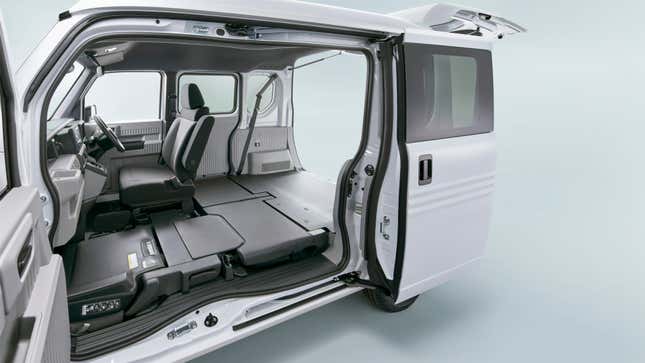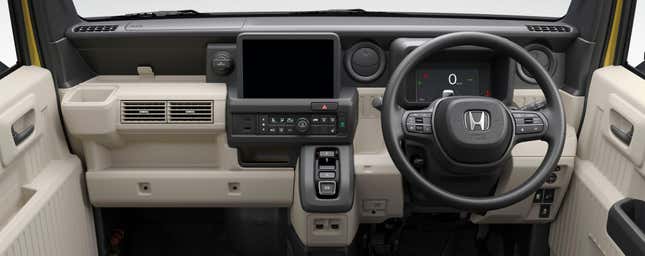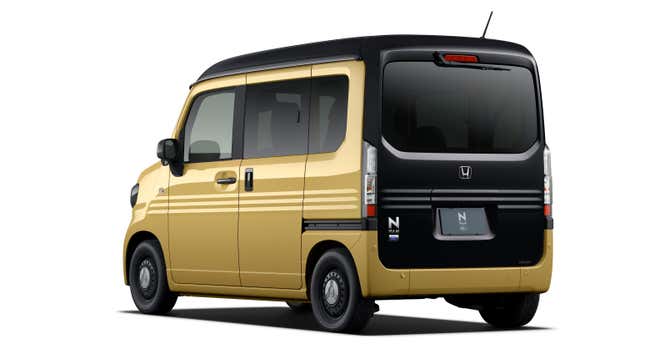Do You Think Honda's $15,000 Electric Kei Van Would Actually Work In America?

Every time a small and affordable EV gets revealed in another country, especially Japanese kei cars and vans, there are tons of people online that will shout from the rafters about how it should be brought to America. The latest is Honda’s N-Van e: (yes that’s really the name), an electric commercial van with a range of 152 miles and a price tag starting at the equivalent of around $15,000 in Japan. The N-Van e: is super cute and looks perfectly suited to Japan. But do y’all actually think this tiny thing would work in America?
2024 Acura ZDX Type S First Look: Unleashing 500 HP In An Electrifying Package
Like, it’s really tiny. Honda hasn’t given dimensions for the electric model yet, but the gas-powered N-Van on which it’s based is only 133.7 inches long and 58.1 inches wide — that’s both half a foot shorter and narrower than a Fiat 500. It rides on little 13-inch wheels that are pushed to the corners, and front and rear overhangs are basically non-existent.
Photo: Honda
It’ll certainly be slow, too, as kei cars are limited to 64 horsepower. Expect a 0-to-60 time of at least 15 seconds, and a top speed not much higher than that. Honda says it uses an eAxle and a large-capacity battery pack of unknown size that doesn’t eat up interior space despite being mounted under the floor. The N-Van e: can fast-charge at 50 kW, good enough to go to 80 percent in 30 minutes, or the battery can be fully recharged in four and a half hours on a 6-kW charger. According to Honda, “the battery cooling and heating system inhibits battery performance degradation caused by the high or low temperatures, contributing to shorter charging time and longer range, especially during winter.”
Honda says the electric version is suited for both commercial and personal uses. It’ll be available with anywhere between one and four seats in a few different configurations, including a two-seat tandem setup, and the additional seats can fold flat into the floor. There’s no B-pillar on the passenger side, which makes it a cinch to load and unload big items, and the ceiling is pretty tall. The electric model has greater interior length than the gas-powered N-Van, too.

Photo: Honda
It’s super cute, at least. There are some interesting creases and body lines, not to mention the ribbed design along the sides and tailgate, and it has a characterful face defined by big headlights and a black “grille” panel made of recycled plastic with colored flecks in it. You can get two-tone paint, retro wheel hub caps and bright colors. The interior is also cool, with straked panels that are like a home’s aluminum siding, a utilitarian dashboard layout and a simple gauge cluster.
The N-Van e: is the first commercial kei van to get side-curtain airbags, and it has a bunch 0f standard safety features including automated emergency braking, adaptive cruise control, lane-keeping assist, pedestrian collision mitigation with steering assist, parking sensors and even something called “unintended acceleration mitigation.” Still, this is not a vehicle I’d want to be in if a crash occurs, even a low-speed one. Just look at the crash test video below:
【ホンダ 新型N-VAN vs N-BOX】衝突安全 どっちが優秀!?
So, dear readers, what do you think? Would a kei van like the Honda N-Van e: really be feasible in the U.S.? The 150-ish-mile range would be more than enough for the typical delivery driver, and the N-Van certainly isn’t lacking in space despite its diminutive size. But to me, outside of some niche use cases or extremely dense city driving, I just can’t see something this small, slow and relatively unsafe doing well in the U.S., no matter how cheap and cheerful it is.

Photo: Honda

Photo: Honda

Photo: Honda

Photo: Honda

Photo: Honda

Photo: Honda



